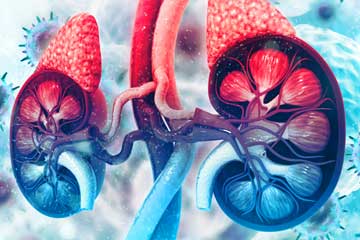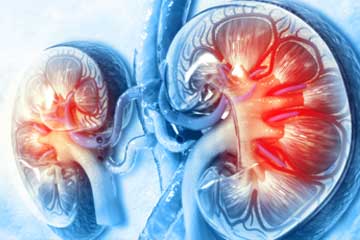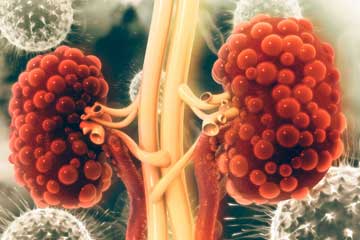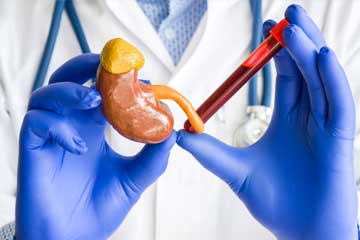What is Polycystic kidney disease?
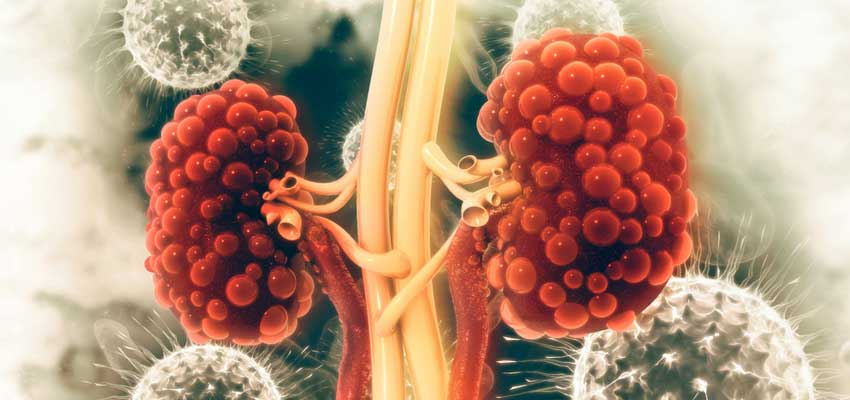
Polycystic kidney disease means the renal has outgrowing cysts on it. It is a genetic condition, the presence of which is mostly based because of the faulty genes one receives through one or both of the parents. The growth of the cysts on the outer part results in the enlarged size of the kidneys and hampers the kidney function.
PKD also allows the cysts to grow on the other parts, such as the liver, ovaries, etc. The disease can threaten your life to an extent by way of high blood pressure and kidney failure.
Since it is mostly inherited, the allopathic doctors have only ways to suppress the complications that arise along with but may not completely cure it. Yes, you can have the medications to get relief from the pain (resulting because of stretching of the cysts). Still, you would need a viable approach, such as polycystic kidney disease treatment in Ayurveda, to get over it completely.
Along with Ayurveda, some lifestyle changes and prevention tips can also help fend off damage to the kidneys.
Cysts get increased by 0.5 inches or larger as the case may be. So, changes in the size are seen as the first complication of having PKD.
Who is likely to get PKD?
PKD is not limited to any specific gender, ages, and race. It can occur equally both in males and females.
The ubiquity of PKD
Polycystic kidney disease is one of the common disorders related to kidney you will ever find. ADPKD has an affecting ratio of 1 in every 500 people, while the other form of PKD called ARPKD can influence 1 in 20,000 children.
What are the types of Polycystic Kidney Disease?
The two major types of kidney cysts are distinguishable with the age of onset and the inheritance pattern that endows down through the families.
The types of PKD are:
Autosomal dominant PKD
One of the common forms of PKD is the autosomal dominant polycystic kidney disease. The autosomal dominant means, the individual with such type of PKD gets the faulty genes from only one parent. ADPKD may exhibit signs and symptoms that usually begin in the late adult age though cysts are often present since the birth of the individual. Autosomal dominant polycystic kidney disease can be classified into type 1 and types 2, depending on what is the genetic cause and how the mutation did occur. Those with type 1 of ADPKD are usually more at the risk of developing kidney failure than people with type 2 of ADPKD.
The complications that arise with such type of PKD:
- Pain in the areas of kidney cysts
- Kidney stones
- Urinary tract infection
- High blood pressure
- Kidney failure
- Abnormal heart valves
- Brain aneurysms
- Liver cysts
- Pancreatic cysts
- Reproductive problems
- Hematuria
Autosomal recessive PKD
This form of PKD is rare to occur and is known to be lethal early in life. The signs and symptoms are usually present at the time of birth or in early infancy. ARPKD can make a child lose his kidney function even when he is in the womb and so-called infantile PKD. Unlike ADPKD, this type of kidney disease can be diagnosed early in life. About 1/3 rd of the babies born with this disorder lose their life within the first few weeks of life, but if he survived the first few days of life, there are high chances of survival into adulthood. However, they have to be on the medications for the rest of their life.
The genetic inheritance pattern of ARPKD is dependent on the existence of faulty genes in both parents. The mutation in the PKDH1 is the factor responsible for the cause of autosomal recessive PKD. However, there is no evidence on how such mutations take place in PKDH1 that enforces the formation of various cysts on the kidneys.
Some cases of PKD are usually not genetic, as gene mutations do not influence them. Such kidney cysts are known to be acquired polycystic kidney disease, and it occurs in people with some other types of kidney cysts or been onto dialysis for several years.
The complications of ARPKD include:
- Breathing problems
- Kidney failure
- Conditions arising because of low liver function or failure
- High blood pressure
What are the signs of PKD?
The signs that tell you may have PKD are as follow:
- High blood pressure: Increased blood pressure for no specific reason can tell your kidneys are damaged.
- Back or side pain: The pain arises when you move around or stretch the body
- Headache: The blood-filled cysts can decrease the ability of the body to produce red blood cells
- Increased size of your abdomen due to enlarged kidneys: The presence of cysts make the size of the kidneys to increase
- Blood in your urine: Hematuria appears when a patient has PKD
- Kidney stones: Stones may grow in the kidneys at the time of PKD
- Kidney failure: Complete loss of kidney function
- Urinary tract or kidney infections: The toxin blood in the cysts result in kidney infections
- Colon problems: Tenderness in the wall of the colon
What are the ways to diagnose cysts on the kidneys?
Healthcare providers check for PKD using genetic testing and imaging tests. He may also work on the family history of kidney disease, to know the type of PKD.
The sooner you get to diagnose PKD; the better are the chances of getting positive results from the treatment.
Imaging tests
The images of the kidneys are taken to know the size of the kidney. It is the radiologist who reads the image of the kidneys and tells whether you have the disease or not
Types of imaging tests:
Ultrasound: To create the image of the structure of the kidney
Computed tomography: To get the image of the urinary tract
Magnetic resonance imaging: To get the detailed view of the internal organs and the tissues associated
Genetic testing: Genetic testing is done through a blood or saliva sample, tested for the mutations in the genes.
If you have the symptom, get your PKD test now!

